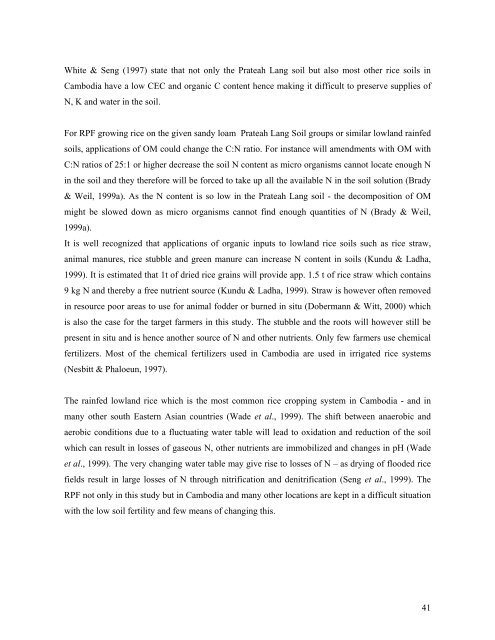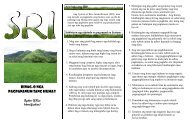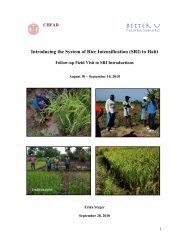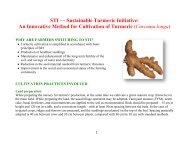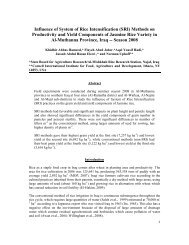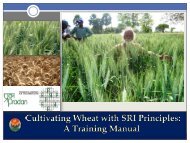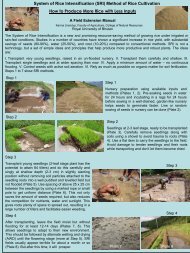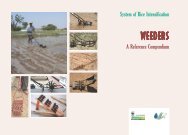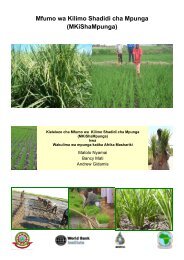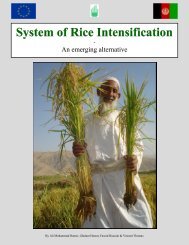EFFECT OF THE SYSTEM OF RICE INTENSIFICATION (SRI) ON ...
EFFECT OF THE SYSTEM OF RICE INTENSIFICATION (SRI) ON ...
EFFECT OF THE SYSTEM OF RICE INTENSIFICATION (SRI) ON ...
Create successful ePaper yourself
Turn your PDF publications into a flip-book with our unique Google optimized e-Paper software.
White & Seng (1997) state that not only the Prateah Lang soil but also most other rice soils in<br />
Cambodia have a low CEC and organic C content hence making it difficult to preserve supplies of<br />
N, K and water in the soil.<br />
For RPF growing rice on the given sandy loam Prateah Lang Soil groups or similar lowland rainfed<br />
soils, applications of OM could change the C:N ratio. For instance will amendments with OM with<br />
C:N ratios of 25:1 or higher decrease the soil N content as micro organisms cannot locate enough N<br />
in the soil and they therefore will be forced to take up all the available N in the soil solution (Brady<br />
& Weil, 1999a). As the N content is so low in the Prateah Lang soil - the decomposition of OM<br />
might be slowed down as micro organisms cannot find enough quantities of N (Brady & Weil,<br />
1999a).<br />
It is well recognized that applications of organic inputs to lowland rice soils such as rice straw,<br />
animal manures, rice stubble and green manure can increase N content in soils (Kundu & Ladha,<br />
1999). It is estimated that 1t of dried rice grains will provide app. 1.5 t of rice straw which contains<br />
9 kg N and thereby a free nutrient source (Kundu & Ladha, 1999). Straw is however often removed<br />
in resource poor areas to use for animal fodder or burned in situ (Dobermann & Witt, 2000) which<br />
is also the case for the target farmers in this study. The stubble and the roots will however still be<br />
present in situ and is hence another source of N and other nutrients. Only few farmers use chemical<br />
fertilizers. Most of the chemical fertilizers used in Cambodia are used in irrigated rice systems<br />
(Nesbitt & Phaloeun, 1997).<br />
The rainfed lowland rice which is the most common rice cropping system in Cambodia - and in<br />
many other south Eastern Asian countries (Wade et al., 1999). The shift between anaerobic and<br />
aerobic conditions due to a fluctuating water table will lead to oxidation and reduction of the soil<br />
which can result in losses of gaseous N, other nutrients are immobilized and changes in pH (Wade<br />
et al., 1999). The very changing water table may give rise to losses of N – as drying of flooded rice<br />
fields result in large losses of N through nitrification and denitrification (Seng et al., 1999). The<br />
RPF not only in this study but in Cambodia and many other locations are kept in a difficult situation<br />
with the low soil fertility and few means of changing this.<br />
41


